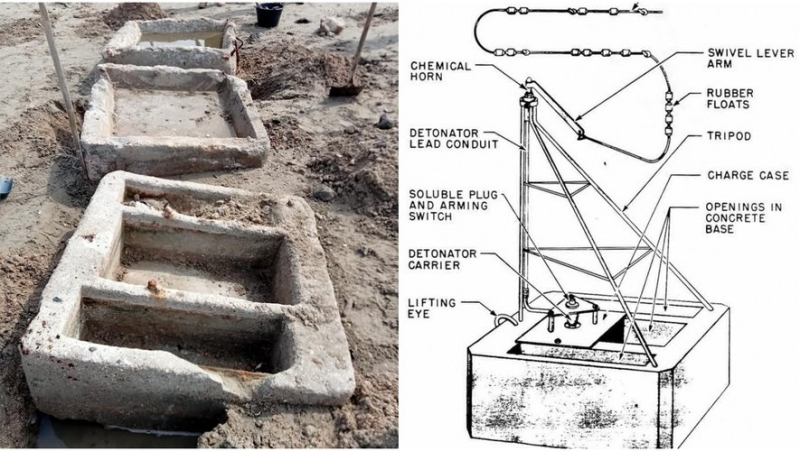Concrete blocks on Frontignan beach: the enigma is solved

Les gorges des blocs en béton accueillaient un dispositif de mine sous-marine. – DR/Artillerie sous-marine allemande.
Quinze jours après leur découverte sur la plage de Frontignan, les mystérieux blocs en béton ont livré leur mystère.
They were discovered on April 1 on the beach of Frontignan, and like the fish, the explanation of their presence and their usefulness has long escaped the hands of the discoverers, the person in charge of the municipal archives as well as the the urban archaeologist, Anne Montecinos. Everyone was also present on site this Monday to assess the location. It was ultimately thanks to appeals launched by Midi Libre and on social networks that the thick mystery surrounding the presence of three reinforced concrete blocks, brought to light by the sea surge at the end of March, has been cleared up.
A charge of 75 kg of explosive
The leads leading to use for fishing or agriculture having been ruled out, the light came from two local enthusiasts of the history of the Second World War, David Mallen and Régis Calazel. They are simply Küstenmine-A. All you had to do was think about it. More seriously, these blocks, placed by the Germans, served as support for an underwater mine system. The elements were placed at the bottom, at a maximum depth of 10 m and approximately every 35 meters, the part with the three grooves directed upwards. It supported a triangle of beams, connected in the central groove with a strong explosive charge. Precisely 75kg of explosives, composed of 60% hexanite, 60% TNT and 40% hexanitrodiphenylamine.
Buoys to trigger the explosion
At the top of the triangle, a pivoting lever, connected to the load, was connected to a whole string of floats. It was therefore enough for the hull of a ship to violently push these buoys to the surface to trigger the explosion. Which did not occur on the coast of Frontignan since no Allied maritime attack took place in this sector. On the other hand, there were explosions just after the war when the Mine Clearance Directorate was created under the authority of the Ministry of Reconstruction and Urban Planning.
No kind of danger today
As Carole Briffaud, the head of the Frontignan archives, mentions, this "interministerial service drew its human and material resources from the various ministries. A substantial budget was voted for this dangerous undertaking. After the Liberation, a number of German prisoners were "recruited" to demine the beaches as well as the hinterland."
Let us therefore point out that the elements discovered were treated, at the time, as they should be. They do not present any kind of danger.
I subscribe to read more




